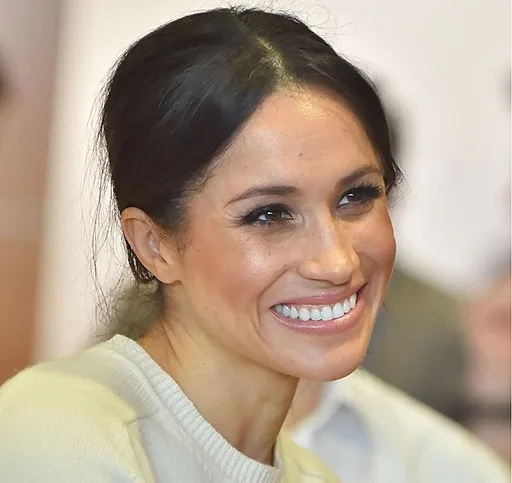Fashion feud and accusations of stereotyping deepen the rift between the Duchess of Sussex and Princess of Wales
Meghan Markle allegedly made a three-word dig towards Princess Kate, sparking a feud that has reportedly doomed their relationship from the start. According to US News Reporter Rosie Jempson, the tension began over a fashion designer, with Meghan upset about Kate being given priority for outfits from British designer Erdem Moraloglu.
The Duchess of Sussex, a fan of Moraloglu’s clothes, was reportedly frustrated that her future sister-in-law, an existing customer, was given first dibs on the latest designs. Meghan, who had worn the designer’s dresses before joining the Royal Family, did not publicly wear his outfits again until 2019. The preferential treatment given to Kate allegedly did not sit well with the Sussexes.
Embed from Getty ImagesAdding to the tension, Meghan is said to have questioned why Kate was given priority, reportedly stating that Kate “wasn’t even Queen.” This incident, along with a fallout over Princess Charlotte’s bridesmaid dress ahead of the 2018 Royal wedding, further strained their relationship. Prince Harry has claimed that this incident left Meghan “sobbing on the floor,” largely driven by Kate’s anger over waiting a day to hear back from Meghan about the dress.
In a television interview, Prince Harry accused Kate of “stereotyping” Meghan, which he said created a significant divide. This public airing of grievances has reportedly left Kate “upset and angry.”
Majesty Magazine’s editor-in-chief and royal biographer, Ingrid Seward, commented that Kate would be unhappy with Harry for discussing her publicly.
Analysis:
Political Analysis: The ongoing tensions within the royal family, exemplified by the feud between Meghan Markle and Princess Kate, have significant political implications. The British monarchy, as a symbol of national unity and continuity, relies on the perception of internal harmony and stability. Publicly aired grievances and interpersonal conflicts undermine this perception, potentially eroding public trust and support for the institution. The monarchy’s ability to maintain its relevance and authority is challenged when internal discord becomes a subject of public fascination and media scrutiny. Furthermore, the handling of such disputes can influence broader public attitudes towards the monarchy, affecting its role and influence in contemporary British society.
Social Analysis: The feud between Meghan and Kate resonates with broader social issues, such as rivalry, privilege, and the complexities of familial relationships. The public’s fascination with the royal family’s private matters highlights societal interest in themes of fairness and favouritism. This interest reflects a broader cultural narrative about the struggles and conflicts that can arise within families, especially those with high public visibility and expectations. Additionally, the dynamics between Meghan and Kate mirror common social experiences of competition and resentment, making their story relatable to many people. The royal family’s struggles thus become a lens through which society examines its values and norms regarding family, loyalty, and fairness.
Racial Analysis: The accusations of stereotyping against Meghan bring critical attention to issues of race and discrimination within the royal family. Meghan, being of mixed race, has often been at the center of discussions about how the monarchy and the media treat individuals who do not fit the traditional mould of British royalty. Prince Harry’s claims that Meghan faced stereotyping highlight the challenges of addressing racial biases within an institution that has historically been seen as a bastion of whiteness and privilege. This aspect of the feud underscores the importance of addressing racial biases and their impact on personal and public relationships. The scrutiny and criticism Meghan has faced can be seen as part of a larger conversation about race, identity, and acceptance in the UK and beyond.
Gender Analysis: The handling of the fashion feud and the subsequent fallout reflect traditional gender roles and expectations within the royal family. Both Meghan and Kate are subject to intense public scrutiny regarding their appearance, behaviour, and roles within the family. This scrutiny reflects broader societal expectations placed on women, particularly those in prominent positions. The pressure to conform to certain standards of dress, demeanour, and conduct is amplified for royal women, who are often seen as symbols of national identity and virtue. The dynamics between Meghan and Kate highlight the pressures and scrutiny faced by women in the public eye, especially within an institution steeped in tradition. The feud also sheds light on how women’s interactions and conflicts are often sensationalized and dissected in ways that men are not, reflecting ongoing gender biases in media and society.
Economic Analysis: The rift between Meghan and Kate has significant economic implications, influencing the marketability of royal fashion and engagements. The public’s interest in their fashion choices drives significant revenue for designers and brands associated with them. Media coverage of their relationship and appearances generates substantial advertising and sales opportunities. The economic impact extends to tourism and merchandise, as royal events and personalities attract global attention and spending. The fashion feud specifically highlights the lucrative nature of royal endorsements and the competition among designers to dress members of the royal family. Additionally, the public’s fascination with the royal family’s personal lives fuels a media industry that profits from sensational stories and exclusive coverage, contributing to the broader economy
